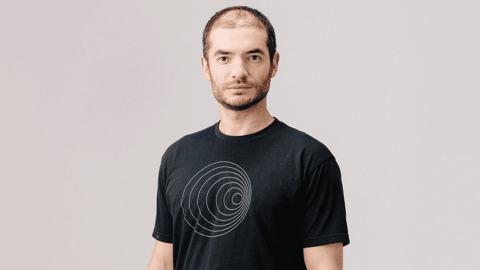Safe Superintelligence by OpenAI’s co-founder Ilya Sutskever Raises $2 Billion at $32 Billion Investment
The artificial intelligence industry is entering a new epoch—one defined not just by scale, but by the ambition to engineer systems that exceed human cognition. At the center of this paradigm shift is Safe Superintelligence (SSI), a stealth-mode startup founded by OpenAI’s co-creator Ilya Sutskever. With a $32 billion valuation and a $2 billion war chest, SSI has emerged as one of the most audacious bets in the AI landscape. While the company remains tight-lipped on deliverables, its mission—to build superintelligence with embedded ethical safeguards—has galvanized both optimism and skepticism. Meanwhile, a host of nimble AI startups are redefining sectors with grounded innovation.
The Genesis of Safe Superintelligence: A Focused Leap Beyond AGI
Founded in May 2024 by Ilya Sutskever, former Apple AI head Daniel Gross, and researcher Daniel Levy, SSI was born out of discontent with the incrementalism of mainstream AI labs. Unlike OpenAI or Anthropic, which take a generalist approach to artificial general intelligence (AGI), SSI is singularly focused on building safe superintelligence—AI that not only surpasses human cognition but does so within tightly controlled ethical boundaries.
Key pillars of SSI’s strategy include:
Safety-first architecture: Experimenting with alternatives to RLHF (Reinforcement Learning from Human Feedback), including hard-coded ethical constraints at the model level.
Scalable innovation: Developing proprietary techniques to scale intelligence without relying solely on brute-force compute.
Elite recruitment: Poaching top alignment and neurosymbolic computing researchers from OpenAI and Google DeepMind.
SSI’s operations span Palo Alto and Tel Aviv, with expansion plans for Zurich and Singapore by 2026.
Funding and Valuation: Betting Big on the Future
Despite having no commercial product or active user base, SSI has attracted extraordinary investor confidence.
Recent financial milestones include:
$2 billion Series B (April 2025): Led by Greenoaks ($500 million), with Lightspeed and Andreessen Horowitz participating.
$1 billion Series A (September 2024): Raised at a $5 billion valuation to procure 12,000 Nvidia H100 GPUs.
Burn rate: Estimated at $300 million annually, primarily for compute infrastructure and talent acquisition.
According to Wall Street Pit, Sutskever has stated SSI won’t pursue “AI increments” but will instead focus on a single-product breakthrough, raising eyebrows about the company’s long-term commercial viability.
AI Startups Redefining Industry Norms in 2025
While SSI stakes its claim on the far horizon, a dynamic ecosystem of AI startups is driving real-world change across enterprise, creative, and healthcare domains.
Enterprise AI Solutions
Dynamiq.ai: A low-code platform integrating Retrieval-Augmented Generation (RAG) and fine-tuning to create enterprise-specific AI agents. Used by 47 Fortune 500 firms.
Scalestack.ai: Provides AI-driven market intelligence to optimize sales pipelines, reducing deal cycles by 35%.
Arthur AI: Offers model monitoring and bias mitigation tools, including the “Arthur Shield” LLM firewall that blocks unsafe prompts with 99.7% accuracy.
Creative and Developer Tools
Synthesia: Enables the generation of AI avatars for corporate training; adopted by 30% of FAANG companies.
Codeium: An AI assistant for developers, recently valued at $1.25 billion after a $243 million Series C.
PhotoRoom: Offers one-click image enhancement, with 23.6 million monthly users and $64 million in Series B funding.
Cybersecurity and Compliance
DNSFilter: Surpasses legacy firms like Cisco in malware detection; now deployed across 12 U.S. federal agencies.
Copyleaks: Detects AI-generated content with 99.1% accuracy, serving 1,200+ universities.
Healthcare and Biotech
Precision Farming AI: Uses vision models to identify crop disease, reducing pesticide use by 40%.
Virtual Health Assistants: HIPAA-compliant bots now diagnose up to 85% of common symptoms, with the potential to save U.S. healthcare $30 billion annually by 2027.
Autonomous Systems and Smart Infrastructure
Shield AI: Builds military-grade reconnaissance drones; recently raised $1.1 billion in debt financing.
HomeAI: Combines IoT with language models to reduce household energy usage by 22% through predictive automation.
The Roadblocks Ahead: Technical, Regulatory, and Ethical Headwinds
Technical Hurdles
Value Alignment: SSI’s moonshot depends on solving the alignment problem—teaching superintelligent systems to reliably interpret and act upon human values.
Energy Consumption: SSI’s Tel Aviv data center reportedly uses 85 megawatts daily—the equivalent of 68,000 homes—raising questions about sustainability.
Market and Policy Pressures
Investor Trends: 73% of venture firms now prioritize AI in their portfolios, pushing seed rounds to a median of $12 million.
Regulatory Costs: Compliance with frameworks like the EU AI Act and U.S. Executive Order 14110 is forcing startups to allocate up to 20% of their budgets to legal and audit procedures.
Social and Ethical Risks
Algorithmic Bias: Tools like Arthur AI and Deepgram are increasingly used to audit model outcomes for racial or gender-based discrepancies.
Job Displacement: According to the WHO, AI could replace 27% of administrative roles in healthcare by 2030, accelerating the need for government-backed reskilling initiatives.
Conclusion: Between Vision and Viability
Safe Superintelligence embodies the duality of today’s AI ecosystem: a high-risk, high-reward endeavor to leapfrog modern intelligence models, even as practical startups rapidly commercialize less abstract innovations. SSI’s $32 billion valuation represents belief in a long-term vision—but its lack of tangible output continues to invite scrutiny.
Meanwhile, sector-specific disruptors like Dynamiq.ai, Copyleaks, and Shield AI are shaping the AI economy from the ground up. As the current decade progresses, the tug-of-war between ambition and application will define the next era of artificial intelligence—where moonshots and market solutions must coexist, and ethical architecture becomes as vital as algorithmic brilliance.
